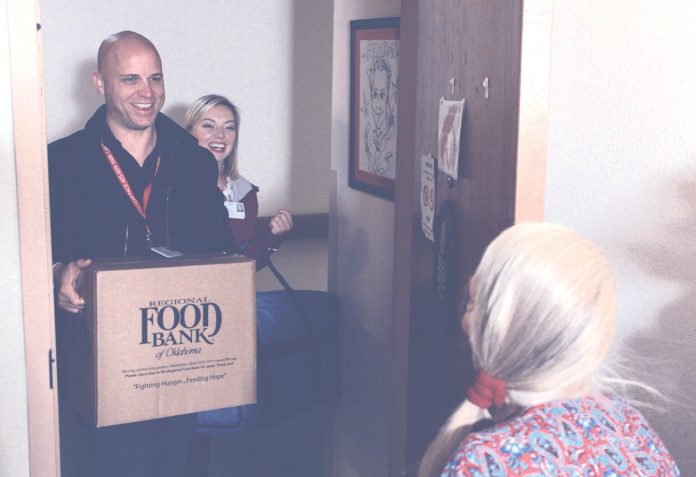
When you hear the word “malnutrition,” you probably think of people in impoverished countries, but the fact is, one in every two older adults is at risk of becoming malnourished.
An elderly Oklahoma City woman was that one in two. Sharon Gibson said she was wasting away. Doctors had given up hope and so had she.
“It was just all overwhelming and I was to the point where I didn’t care whether I lived or died,” the 74-year-old said.
Malnutrition in older adults is a hidden and growing epidemic and a costly one. The estimated price tag of the increased health care costs for disease-associated malnutrition in older U.S. adults tops $51 Billion a year. Hunger is not the sole cause. Sometimes it’s about eating the wrong foods and sometimes medical conditions like cancer, diabetes and Alzheimer’s are to blame.
Gibson had been diagnosed with Chronic Obstructive Pulmonary Disease, which left her constantly out of breath. She also had digestive issues that impacted her ability to eat, as well as trouble standing, which made it difficult to cook.
“I was very sick physically, emotionally. I couldn’t eat. My digestive system was shot. My lungs were shot – my whole bone structure. I couldn’t even stand up straight,” she explained. That was before Gibson found Valir Pace, a non-profit program that provides all-inclusive care to older adults.
“A lot of participants have come to me when I’m doing their initial assessment and they say, ‘you know, sometimes I have to pay my medicine, you know, pay for medicine and sometimes I have to decide if I want to eat or what I’m going to buy to eat and that’s so heartbreaking,” said Zella Classen, MA, RD/LD, director of Food and Nutrition at Valir Pace.
At Pace, Classen and the entire nutrition team spend their days preparing, serving and packing meals for delivery to participants. They know malnutrition in older adults can lead to a variety of health problems. These include:
• An increased risk of infection due to a weak immune system
• Poor wound healing
• Muscle weakness and decreased bone mass, which increases the risk of falls and fractures
• A higher risk of hospitalization and death
“A lot of times someone will come to me and they may not have been educated on an appropriate diet for them. And remember, as we are get older, we may develop a chronic disease like diabetes or heart disease, and things like that; and they may not have been educated on that. Or if they have been, they really struggle on getting the right foods for that diet because of their limited income. So, we try to work with them on educating and then trying to help solve that problem on getting them the appropriate foods,” Classen said.
Today thanks to Valir Pace, participants have access to two meals a day, as well as delivery of specially prepared meals and groceries to their homes. It’s not just providing food, though. Classen said it is about providing the right food and the right nutritional supplements to optimize health.
Today, Gibson has a very different outlook on life.
“Nutrition is the basis of everything. If you’re not eating, your body isn’t functioning. You can’t do anything else. So, Zella interviewed me and asked really good questions. They got to the root of my digestive problems and set up a plan with me and, slow but sure, I gathered strength,” she said.
Gibson pays nothing for the program – a program she says has literally saved her life.
“They’ve turned my life around. I’m living again. I’m not just existing. I’m not waiting to die. I’m living and enjoying each day,” she said.
To find out if you or a loved one qualifies for the program, visit www.valirpace.org











